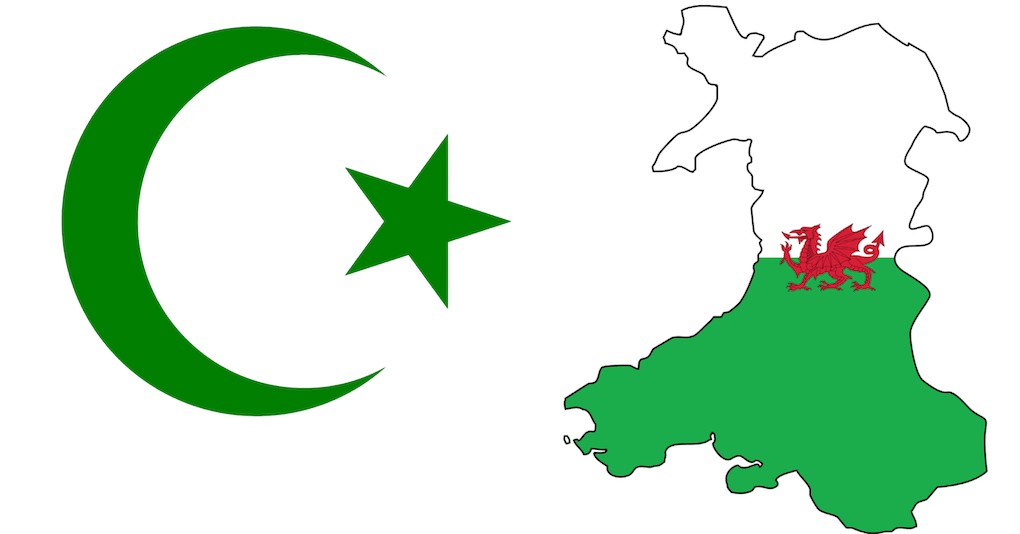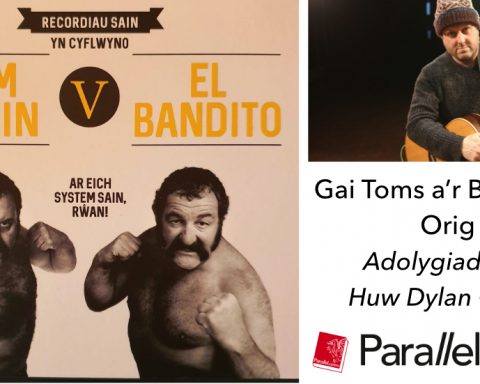Mae’r 11eg o Orffenaf 2018 yn nodi 23 blynedd er lladdfa Srebrenica, y gweithred fwyaf treisgar yn hil-laddiad Bosnia yn y 1990au. Ym mis Hydref 2014, ymwelodd Laura Jones, dysgwr Cymraeg o Gaerdydd, â’r wlad gydag arweinwyr ffydd Cymreig i ddysgu am y hil-laddiad. Yma, mae hi’n trafod y daith a beth rydyn ni’n gallu ddysgu o’r erchyllter.
11th July 2018 marks the 23rd anniversary of the Srebrenica massacre, the most violent act of the Bosnian genocide in the 1990s. In October 2014, Laura Jones, a Welsh learner from Cardiff, visited the country with Welsh faith leaders to learn about the genocide. Here, she discusses the trip and what lessons we can learn from the atrocity.
| Pan oedd siawns i fi ymweld â Bosnia-Herzegovina yn 2014, cymerais i’r cyfle gyda brwdfrydedd, heb fod yn hollol ymwybodol o bwysau’r hil-laddiad a ddigwyddodd yna yng nghanol y nawdegau. Arweiniwyd y daith gan yr elusen Remembering Srebrenica gyda’r nod o ddysgu teithwyr am yr erchyllterau er mwyn iddyn nhw allu gweithredu yn y DU i atal unrhyw beth tebyg rhag digwydd eto. Roedd y garfan ar y daith yn cynnwys arweinwyr ffydd a phobl eraill sy’n gweithio mewn cymunedau crefyddol gwahanol ar draws Cymru. | When I was given a chance to visit Bosnia-Herzegovina in 2014, I took up the opportunity with enthusiasm, not fully aware of the weight of the genocide that happened there in the mid-nineties. The trip, led by the charity Remembering Srebrenica, was designed to teach delegates about the atrocities that took place so that they could take action in the UK to prevent things like this happening again. My cohort consisted of faith leaders and those active in different religious communities across Wales. |
| Byddwn i wedi bod tua 8 mlwydd oed ar uchafbwynt y trais yn Bosnia-Herzergovina ym 1995 ac felly dydw i ddim yn cofio llawer amdano o’m plentyndod. Ac mae’n ymddangos i fi fod hil-laddiad Bosnia yn rhywbeth sy wedi’i anghofio yn y DU gan mwyaf. Fydda i byth yn anghofio‘r pedwar diwrnod a dreuliais yn Bosnia ym mis Hydref 2014 ac rydyn ni’n gallu dysgu gwersi o beth ddigwyddodd yno yma yng Nghymru o hyd yn fy nhyb i. | I would have been about eight years old at the height of the violence in Bosnia-Herzegovina in 1995 and I remember little about it from my childhood. And it seems to me that more widely, in the UK at least, the Bosnian genocide is something that has largely been forgotten. The four days I spent in Bosnia in October 2014, will certainly be something I will never forget and something I think we can learn lessons from here in Wales. |
| Trwy gydol ei hanes, mae Bosnia wedi bod yn genedl aml-grefyddol ac aml-ddiwylliannol gyda phobl o gefndiroedd gwahanol yn byw gyda’i gilydd. Mae Sarajevo, ei brifddinas, yn ddinas hardd sy wedi’i llysenwi fel ‘Jerusalem Ewrop’ oherwydd ei gymunedau ffydd amrywiol ac oherwydd bod mosg, eglwys a synagog yn bodoli mor agos at ei gilydd. Roeddwn i wedi fy syfrdanu gan harddwch y wlad sy’n llawn gwyrddni, a chan y bryniau tonnog, y bensaernïaeth fanwl a’r safleodd hanesyddol. | Throughout its history, Bosnia has been a multi-religious and multicultural nation, with people of different backgrounds living together. Sarajevo, its capital, is a picturesque city nicknamed the ‘Jerusalem of Europe’ because of its diverse faith communities and because it hosts a mosque, church and synagogue within a stone’s throw of each other. I was stunned by the beauty of the country which is full of greenery, rolling hills, elaborate architecture and historic sites. |
| Ond yn y nawdegau cynnar, dioddefodd y wlad ergyd wrth i luoedd Serbaidd ymdrechu i greu Serbia Fwyaf gan geisio puro’r boblogaeth o’r rhai nad oedd yn Serbaidd gan gynnwys y boblogaeth fawr Bosniak Fwslimaidd a’r Croatiaid Catholig hefyd. Trodd cymydog yn erbyn cymydog a daeth ffrindiau’n elynion wrth i luoedd Serbaidd geisio cael gwared ar bawb nad oeddynt yn Serbaidd. Er gwaethaf ei harddwch, roedden ni’n gallu gweld arwyddion yr ymosodiadau wrth deithio o gwmpas Sarajevo – nodau sielio (neu ‘rhosynnau Sarajevo’) sy wedi’u peintio’n goch er mwyn coffáu’r ymosodiadau, a thyllau bwledi sy wedi britho blociau tŵr y ddinas. | But in the early nineties, the nation suffered a blow as Serb forces strived to create a ‘Greater Serbia’ which involved the ethnic cleansing of any non-Serbs including the large Muslim Bosniak population as well as Catholic Croats. Neighbour turned on neighbour and friends became enemies as Serbs forces tried to rid the country of any non-Serbs. Despite its beauty, the signs of the attacks could be seen as we travelled around Sarajevo – marks from shelling (or ‘Sarajevo roses’) which had been painted red so that the attacks are not forgotten, and bullet holes that speckled the city’s tower blocks. |
| Srebrenica oedd y digwyddiad mwyaf treisgar ac arswydus yn hil-laddiad Bosnia ac wrth i fi ddysgu amdano, sylweddolais i faint o waith rydyn ni angen ei wneud yn Ewrop heddiw i atal ymosodiadau fel y rhain. Datganwyd Srebrenica yn ‘parth diogel’ gan y Cenhedloedd Unedig yn ystod rhyfel Bosnia. Pan gyrhaeddodd lluoedd Serbaidd yr ardal, aeth y Bosniaks lleol i ganolfan Cenhedloedd Unedig agos i gael lloches ond cawsant eu troi i ffwrdd. | Srebrenica was the most violent and horrific incident of the Bosnian genocide, and learning about it made me realise how much work still needs to be done in Europe today to prevent such attacks. Srebrenica was declared a ‘safe zone’ by the UN during the war in Bosnia. When Serb forces arrived in the area, the local Bosniaks sought refuge at a nearby UN base but were turned away. |
| Wedyn gwahanodd y lluoedd Serbaidd y dynion a’r bechgyn o’r menywod gan ddweud y bydden nhw’n ddiogel. Ond, yn lle hynny, o fewn tri diwrnod cafodd dros 8,000 o bobl eu lladd. Doedd dim gwahaniaethau amlwg rhwng cymunedau’r ardal ar y pryd, felly lladdwyd llawer ohonynt dim ond oherwydd sŵn eu henwau. Adroddodd un o’r goroeswyr, sef Hasan Hasanovic, ei hanes torcalonnus o ddianc rhag y lluoedd, ond doedd ei dad a’i efell ddim mor ffodus gan gael eu lladd yn y broses. Wrth iddo fe siarad, roeddwn ni’n edrych ar draws mynwent goffa Srebrenica lle mae miloedd o feddfeini gwyn, plaen yn estyn dros y mynyddoedd fel arwydd amlwg o’r lladdfa a ddigwyddodd yno. | The Serb forces then separated the men and boys from the women telling them they would be kept safe, but instead, in just three days, over 8000 people were killed. There were no obvious differences between communities in the region at the time and many were killed simply because they had a Muslim-sounding name. One of the survivors, Hasan Hasanovic, recounted his harrowing story of escaping the forces, but his father and twin brother were less fortunate and were killed in the process. As he did, we looked across the Srebrenica memorial cemetery where thousands upon thousands of plain white stones stretch onto the mountains as a stark reminder of the deaths that occurred. |
| Mae Srebrenica yn ein hatgoffa bod hil-laddiad yn rhan o hanes diweddaraf Ewrop ac mae llawer o waith i’w wneud o hyd. Yn bendant, agweddau gwahaniaehol tebyg i’r rhai a gaed yn ystod rhyfel Bosnia sy’n bodoli yn y DU heddiw - mae Islamoffobia yn gwaethygu, mae agweddau gwrth-Semitig yn parhau ac mae trafodaeth negyddol ynglŷn â ffoaduriaid a mewnfudiad. Mae rhai’n credu bod hyn yn ddiniwed ond mae’r ffaith bod ymosodiadau treisgar yn erbyn Mwslimiaid a mosgiau ym Mhrydain yn cynyddu, yn dweud stori wahanol. | Srebrenica reminds us that genocide is indeed a part of Europe’s recent history and there is still much work to be done. There are certainly parallels in the UK today with discriminatory attitudes held during the Bosnian war – Islamophobia is on the rise, anti-Semitic attitudes persist and there is negative rhetoric around refugees and migration. Some may believe this is harmless, but increasing violent attacks on Muslims and mosques in Britain tell a different story. |
| Hyd yn oed yng Nhgymru, dydyn ni ddim heb feirniadaeth – dim ond flwyddyn yn ôl, teithiodd dyn o Gaerdydd, Darren Osborne, i Lundain er mwyn ymosod ar addolwyr tu allan i mosg mewn ymosodiad cerbyd wedi’i sbarduno gan, yn ôl barnwr, ei “ideoleg atgas tuag at Fwslimiaid”. | Even in Wales, we are not free from criticism - just one year ago, a man from Cardiff, Darren Osborne, travelled to London and attacked worshippers outside a mosque in a van attack driven by what a judge called his “ideology of hate towards Muslims”. |
Mae’n anodd gwybod beth yw’r datrysiadau i’r problemau hyn yn ein cymdeithas ond mae Remembering Srebrenica yn ceisio brwydro yn erbyn agweddau cas ac anoddefgar trwy atgoffa pobl am orffenol Ewrop a thrwy hyrwyddo ysbryd o gydfyw yng nghymunedau amrywiol y DU. Os hoffwch chi ddangos eich cydlyniad yn erbyn casineb ac anoddefgarwch ac os byddwch chi eisiau dysgu mwy am hil-laddiad Bosnia, mae Remembering Srebrenica Cymru yn cynnal digwyddiad coffa cenedlaethol yng Nghaerdydd ddydd Gwener 13eg o Orffenaf. Er mwyn cofrestru am y digwyddiad, ewch i: https://www.eventbrite.co.uk/e/wales-national-remembering-srebrenica-commemoration-tickets-46404100915. Bydd goroeswyr yr hil-laddiad a’r rhai sy wedi gweithio yn Bosnia, neu wedi ymweld â hi, yn rhannu eu profiadau.
It is difficult to know what the solutions are to these problems in our society but Remembering Srebrenica is trying to combat attitudes of hatred and intolerance by reminding people of Europe’s past and promoting a spirit of coexistence in the UK’s diverse communities. If you would like to show your solidarity against hatred and intolerance and learn more about the Bosnian genocide Remembering Srebrenica Wales is holding a national memorial event in Cardiff on Friday 13th July. You can register for the event here: https://www.eventbrite.co.uk/e/wales-national-remembering-srebrenica-commemoration-tickets-46404100915. Survivors of the genocide and those who have worked in or visited the region will be sharing their stories and experiences.
SrebrenicaWales RememberingSrebrenicaWales / Laurabakes








